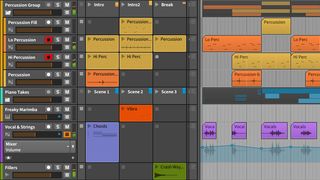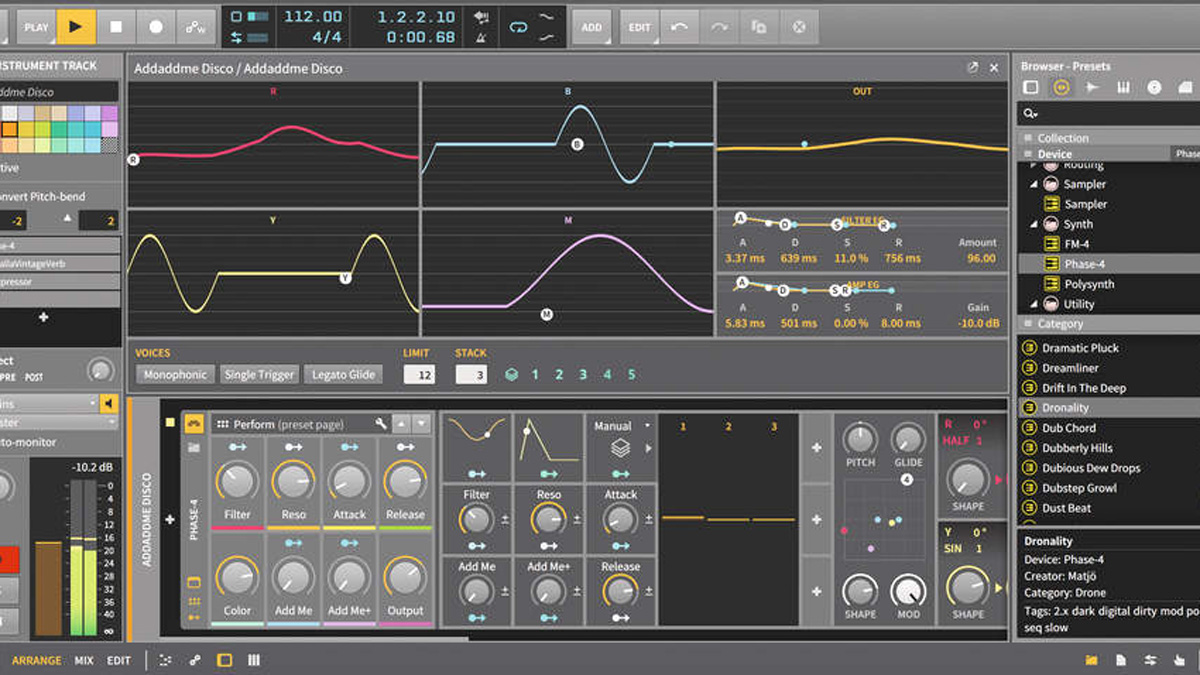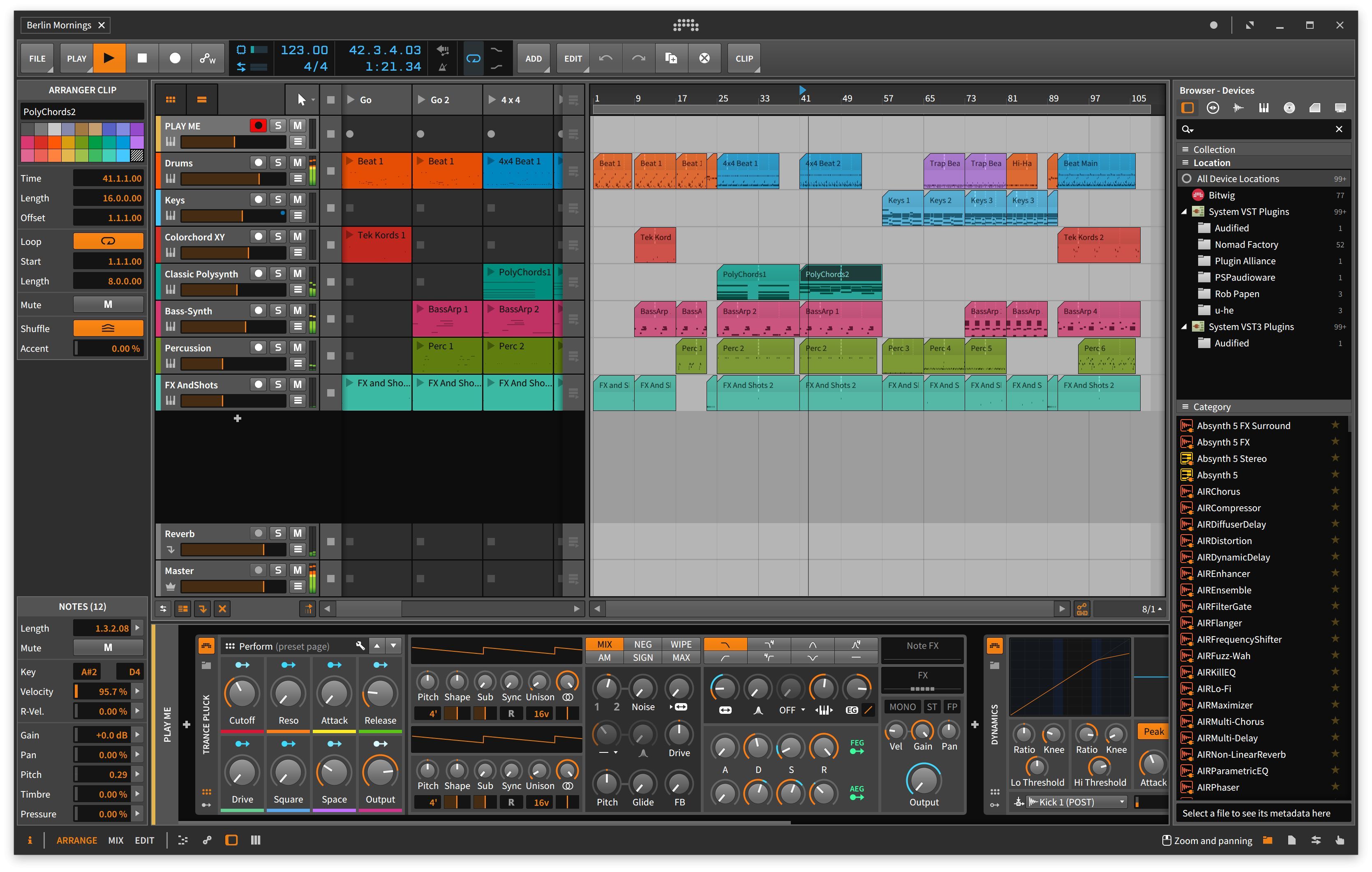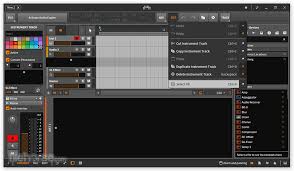
Why not try reversing the detune value from negative to positive, to differ from the first Polymer? Find a good filter cutoff setting too, which you can modulate with a different LFO. Again, alter some of the oscillator settings. In the second Polymer, right-click and hit Delete to remove the LFO modulator, then pick a different wavetable oscillator from the browser for variety. Now, in the Instrument Layer, right-click and select Duplicate on Polymer, and choose the second synth instance to edit. Click and drag Polymer’s device heading into the Instrument Layer. Click the + button to the left of Polymer, then navigate to and select Instrument Layer.
Bitwig studio setlist Patch#
Instead of converting this Polymer patch to a Poly Grid patch to add more oscillators, try using an Instrument Layer container device to stack more instances of Polymer. To assign them, click and drag on a range for each knob, then click the Modulator Out arrow again to finish. Modulate the Phase Modulation and the Index of the wavetable. Next, click the Modulator Out arrow in the LFO waveshape display, which will highlight the Polymer parameters available for routing. Set it to a half-note to make the modulations very pronounced. Click the arrow in the LFO waveshape display to open the modulator editor, where you can set the LFO rate unit from a drop-down menu. Try adjusting some of the wavetable oscillator’s parameters, such as the phase modulation, wavetable position (Index) and the pitch-detuning setting.Ĭlick an empty modulator slot to open the modulator browser. Click the Wavetable graphic to choose from the more than 100 wavetables available in the browser. In the Oscillator module (coloured yellow), swap from Pulse to Wavetable.

Setting up the first wavetableįrom a new Instrument track, click + and navigate to Polymer in the Device library. Using Bitwig’s container devices and modulators, you can craft a Polymer synth with as many oscillators and LFOs as you like, without having to get involved in any intimidating patching or programming. Fortunately, however, with Bitwig Studio’s flexible interface, that’s no problem. And those who would rather make sounds in Polymer may notice that it only has one oscillator and no LFOs.
Bitwig studio setlist software#
However, not everyone is comfortable working with software modular synthesis. With the click of a contextual menu item, you can convert any Polymer patch to a fully modular Poly Grid patch, which means you can quickly begin a sound in Polymer and convert it to modular rather than having to build it from scratch in the Grid. Polymer also serves as an easy entry point to Bitwig’s massive modular synthesis environment, the Grid.
Bitwig studio setlist how to#
READ MORE: How to create breakbeats with dynamics and distortion on BandLab.Polymer lets you mix and match many oscillator, filter and amp envelope types to create custom variations using synthesis styles such as subtractive, phase distortion, pulse-width modulation and the DAW’s latest addition, wavetable. Firstly, it provided a simple but versatile way to quickly dial up a wealth of high-quality synth sounds. Other new features in Bitwig Studio 3 include an optional realtime ruler for when you need to plan in minutes or hours signal meters within each input chooser for seeing the signal you are looking for and general display and style improvements to aid common workflows.When Bitwig introduced the Polymer synthesizer in Bitwig Studio 3.3 late last year, it accomplished several objectives. We took our first look at The Grid at The NAMM Show, and were suitably impressed. With a dedicated category of phase modules, we have made these concepts freshly accessible and newly relevant for modern music production. After pitch, timbre, and loudness, phase is the essential element of sound, capable of driving basic time functions, complex modulation synthesis, and so much more. These clickable icons appear beside in ports, allowing common connections to be made wirelessly. And for signals that are needed regularly, we have the option of pre-cords.


That includes control signals, which indirectly affect audio.

All signals are interchangeable so any out port can be connected to any in port. In The Grid, all signals are created equal - and 4x-oversampled for the highest sound quality.


 0 kommentar(er)
0 kommentar(er)
